Propeller Shaft for Tohatsu Outboard Motors
A propeller shaft, or drive shaft, is a mechanical component that transmits power and rotation.propeller shaft for tohatsu It is usually used to connect components of a vehicle that cannot be connected directly because of distance or the need to allow movement between them. It is a common part in many vehicles, boats, and aircraft. A propeller shaft is an important part of the engine’s drive line, which carries engine torque from the transmission output shaft to the differential of the rear axle.
Propeller shafts are made of a strong material to withstand the torsional stresses that occur during operation.propeller shaft for tohatsu They are also light and well balanced so they can carry the load without causing vibrations at high speeds. They are typically made of steel tube and contain a set of bearings to support the load. The bearings are assembled in yokes on both ends of the shaft.
Different types of propellers are available for outboard motors, and selecting the right one is an important step in optimizing your boat’s performance.propeller shaft for tohatsu Propeller size, style, and pitch are all factors to consider. The goal is to select a propeller that maximizes your boat’s performance, while allowing the engine to operate within the recommended WOT-RPM window.
The rake angle of the propeller, which refers to the degree that the blades slant backward from their hub center, also plays a role in engine performance. A higher rake angle increases time to plane and top-end speed, but may cause additional strain on the engine. A lower rake angle reduces time to plane and improves handling and control in tight turns.
A three-bladed propeller has more blade surfaces acting against the water, which helps improve hole-shot acceleration and low-speed pulling power. A four-bladed prop has better traction and bite due to more propeller surfaces, which is why it’s often preferred in ski and wake boats. It also reduces ventilation and can run better in rough water conditions than a three-bladed prop.
Once you’ve narrowed down your propeller options, it’s time to determine the proper shaft length. To do this, measure the distance from the inner side of the motor’s mounting bracket to the horizontal anti-ventilation plate that’s above the propeller. If the measurement is less than 20 inches, it means that your motor is a short-shaft (S) model. If it is more than 20 inches, it’s a long-shaft (L) model.
Once you’ve found the correct shaft length, you can fine-tune your boat’s speed and maneuverability by adjusting the engine height. Ideally, the engine should be level with the waterline at WOT. If the engine is too low, it will be difficult to trim the boat in and out, while a too-high engine height can cause excessive vibration. Once you’ve found the perfect position, test your new propeller and make adjustments as needed. Also, remember to keep a spare prop on board in case the first one becomes damaged.
